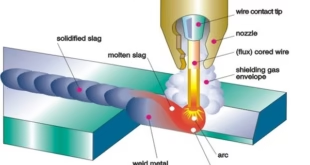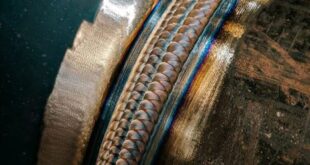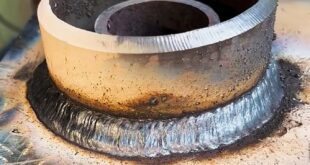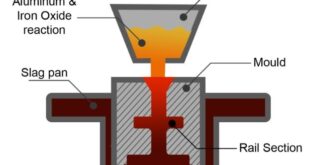Bare Metal Arc Welding: Crafting Strong Bonds through Precision
Introduction
In the realm of metalworking, the art of welding stands as a cornerstone technique for joining metals seamlessly. Among the myriad of welding methods available, Bare Metal Arc Welding emerges as a tried-and-true method renowned for its precision, strength, and versatility. This comprehensive guide will delve into the depths of bare metal arc welding, exploring its techniques, applications, and the secrets to mastering this craft. Whether you’re a seasoned welder or a curious novice, this article will provide you with valuable insights to elevate your welding prowess.
Bare Metal Arc Welding: A Closer Look
Bare Metal Arc Welding, often referred to as Shielded Metal Arc Welding (SMAW), is a welding process that employs a consumable electrode coated in flux to create an electric arc. The heat generated by this arc melts both the electrode and the base metal, fusing them together as they cool. This process forms a solid and sturdy joint, making it an ideal choice for various applications across industries.
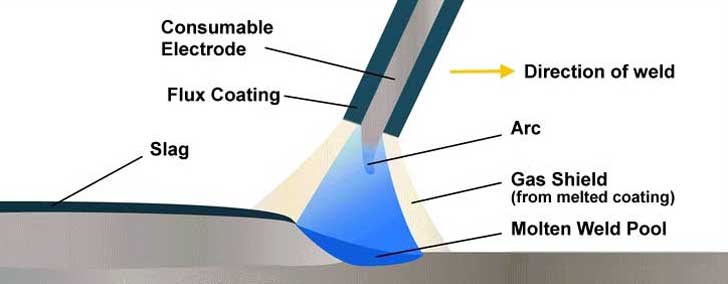
The Beauty of Precision Welding
Precision is the essence of bare metal arc welding. As the welder guides the electrode along the joint, the flux coating disintegrates, releasing gases that shield the molten metal from atmospheric contaminants. This shielding prevents impurities from weakening the weld and ensures the formation of a clean, robust bond.
Exploring the Techniques
Setting Up the Workspace
Before diving into the welding process, proper setup is crucial. Clear the workspace of clutter, ensure proper ventilation, and have fire-resistant equipment on hand. Safety should never be compromised.
Selecting the Right Equipment
Choosing the appropriate equipment is a pivotal step. A welding machine with adjustable settings, welding electrodes suitable for the base metal, a welding helmet, gloves, and protective clothing are essential tools for successful bare metal arc welding.
Preparing the Metal Surface
Achieving a flawless weld begins with preparing the metal surfaces. Clean the base metals meticulously to eliminate rust, grease, and other contaminants that could compromise the integrity of the weld.
Striking the Arc
The process begins by striking the arc, a technique that initiates the electric current between the electrode and the base metal. Proper arc striking ensures a stable and consistent weld pool, facilitating smoother movement of the electrode.
Mastering Electrode Manipulation
The welder’s control over the electrode’s angle, travel speed, and distance from the metal greatly influences the quality of the weld. Practice and experience refine these skills, leading to impeccable results.
Navigating Different Joint Types
Various joint configurations demand different approaches. Whether it’s a butt joint, lap joint, or T-joint, understanding the nuances of each and adjusting your technique accordingly is essential.
Managing Electrode Size and Amperage
The size of the electrode and the welding current (amperage) must align with the thickness of the base metal. This synergy ensures proper penetration and an enduring bond.
Applications Across Industries
Bare metal arc welding finds its utility across a spectrum of industries, owing to its strength and adaptability.
Construction and Infrastructure
In the construction sector, bare metal arc welding is a go-to for fabricating structural frameworks, bridges, and heavy-duty machinery. The durability of the welds ensures the longevity of these essential structures.
Automotive and Transportation
The automotive industry benefits from the precision and strength of bare metal arc welding for crafting chassis, exhaust systems, and other critical components.
Shipbuilding
In maritime applications, bare metal arc welding contributes to the construction of ships and offshore structures, withstanding the rigors of the open sea.
Repair and Maintenance
Bare metal arc welding is also indispensable for repair and maintenance work, enabling the restoration of worn-out parts to their original strength.
Advantages and Limitations
Advantages of Bare Metal Arc Welding
- Strength: The resulting welds exhibit exceptional strength, making them suitable for load-bearing structures.
- Versatility: The process can be applied to various metals and alloys, expanding its range of applications.
- Minimal Equipment Requirements: Bare metal arc welding demands relatively simple equipment, making it accessible to a wide range of welders.
Limitations of Bare Metal Arc Welding
- Limited Overhead Welding: This method is less suitable for overhead welding due to the downward flow of the molten metal.
- Skill-Dependent: Achieving high-quality welds requires skill and practice, making it less forgiving for beginners.
FAQs
Can bare metal arc welding be used for stainless steel?
Yes, bare metal arc welding can indeed be used for stainless steel. By selecting the appropriate electrodes and adjusting the welding parameters, stainless steel joints of remarkable quality can be achieved.
What is the primary function of flux in this welding process?
The flux serves multiple purposes: it shields the weld pool from contaminants, stabilizes the arc, and creates a slag that covers the weld as it cools, preventing oxidation.
Is bare metal arc welding suitable for outdoor projects?
While bare metal arc welding can be used outdoors, wind and environmental factors may affect the shielding gas produced by the flux. Adequate shelter or windbreaks are recommended for optimal results.
Can I weld metals of different thicknesses using this method?
Yes, but special care is required. Welding metals of vastly different thicknesses demands precise control over the welding parameters to prevent burn-through or incomplete fusion.
What safety measures should I take while practicing bare metal arc welding?
Safety is paramount. Wear appropriate protective gear, ensure proper ventilation, work in a well-lit area, and adhere to recommended amperage and voltage settings for the electrodes.
Is bare metal arc welding suitable for artistic projects?
Absolutely. The control and precision offered by this method make it an excellent choice for creating intricate metal sculptures and artistic pieces.
Conclusion
In the realm of metalwork, the art of bare metal arc welding shines as a beacon of strength, precision, and craftsmanship. From towering skyscrapers to delicate sculptures, this technique finds its place across a multitude of industries. By mastering the techniques, understanding its applications, and respecting its nuances, welders can forge bonds that stand the test of time. So, gear up, grab your electrode, and embark on a journey to become a master of the art of bare metal arc welding.
 Welding of Welders All about Welding and Welders
Welding of Welders All about Welding and Welders
